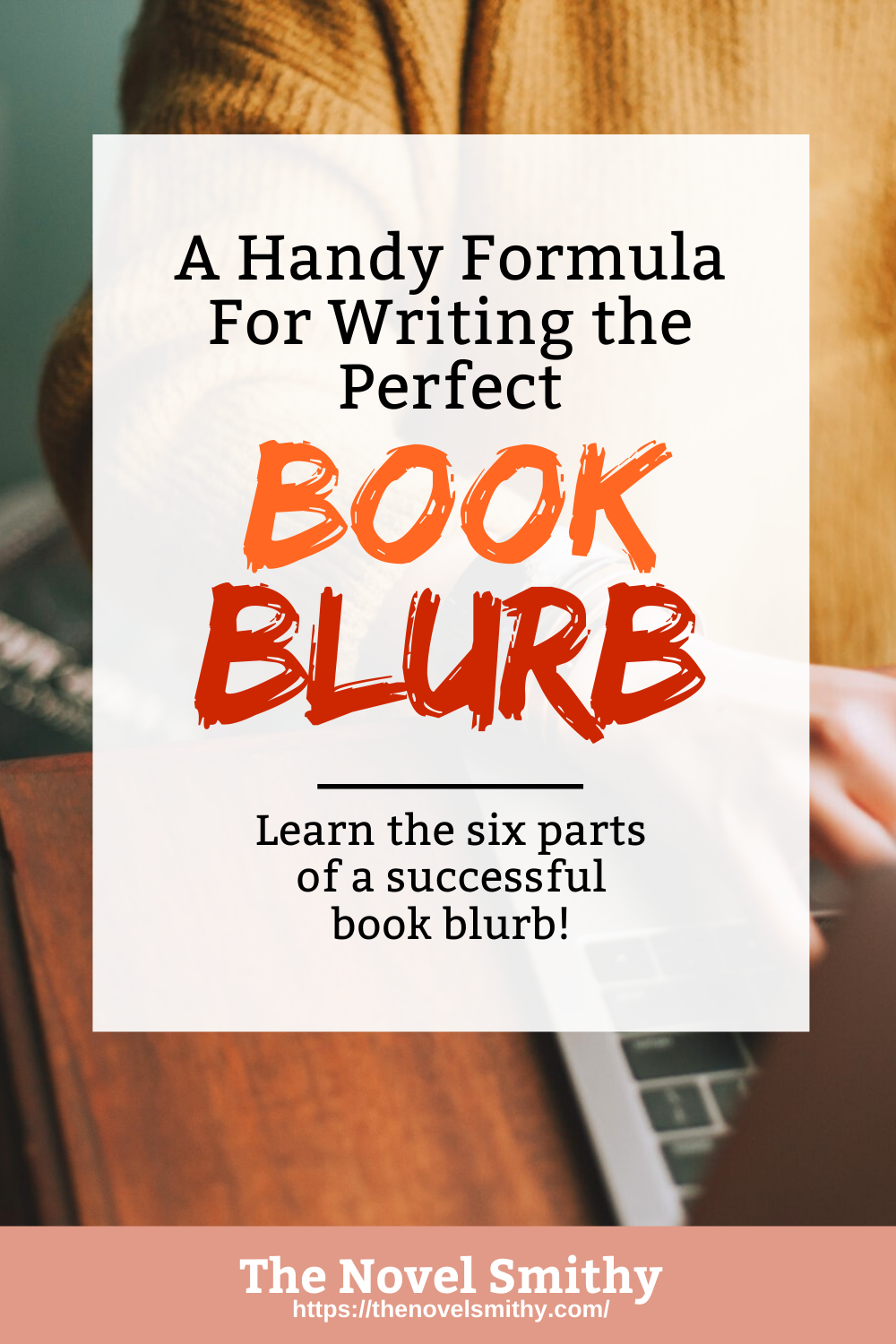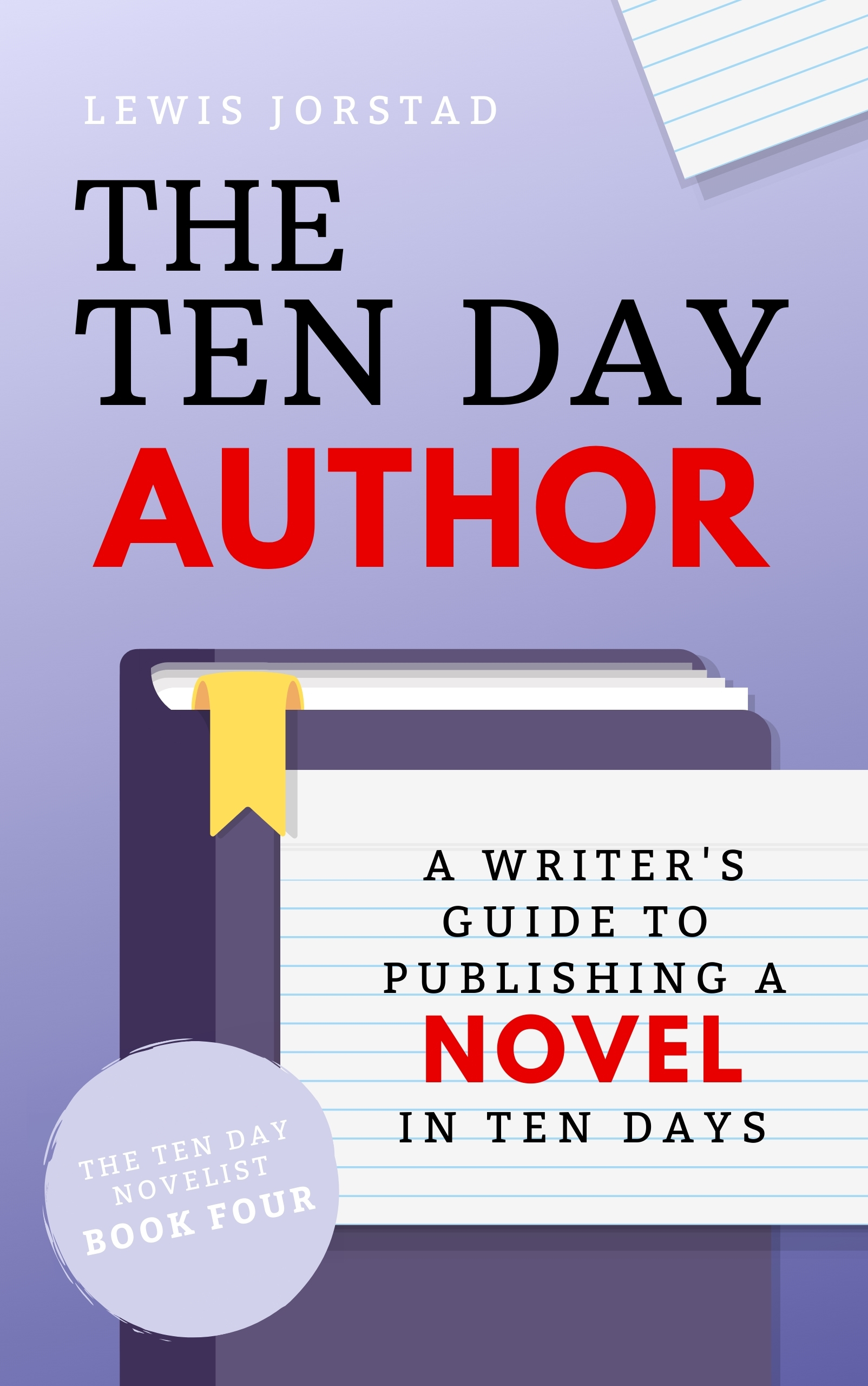A Handy Formula for Writing the Perfect Book Blurb
Imagine you’re browsing your favorite bookstore…
After a while, you find a novel you’re interested in. The title is intriguing, and the cover catches your eye—but what next? Well, if you’re like most readers, you’ll flip the book over and read the book’s description. This is that novel’s book blurb, and it’s often the final test readers use to determine if a novel is worth their time.
Because of this, writing a successful book blurb is a critical skill to learn if you plan to self-publish a novel—and also a difficult one to master. Fortunately, rather than having to create your book’s description from scratch, there’s actually a handy formula you can use to write the perfect fiction book blurb!
What Is a Book Blurb?
Contents
 While I imagine this article’s introduction gave the answer away—if you didn’t know already—let me quickly define what a book blurb is:
While I imagine this article’s introduction gave the answer away—if you didn’t know already—let me quickly define what a book blurb is:
This is a short summary of your story that’s featured on your novel’s product page and back cover. It’ll play a critical role in attracting readers and convincing them to buy your novel.
Of course, “book blurb” is just one of many names for this feature. Sometimes called your back cover copy or your book description, this blurb is a handful of paragraphs that summarize your story and hopefully convince readers to take a chance on your novel.
However, that word “summarize” can easily sell this description short. Far from just recapping your story, your book’s blurb will do a few key things:
- Attract your ideal reader,
- Hook them and make them want to know more,
- Introduce your conflict and protagonist,
- And create a compelling reason to keep reading.
Basically, it needs to strike a balance.
You see, you don’t want your blurb to give too much away—otherwise, you risk spoiling the fun for your readers. At the same time though, you want to offer just enough that readers get invested in your protagonist’s adventure, and eventually choose to purchase your book.
With that said, there is a way to strike this balance! So, let’s unpack the six parts of a successful book blurb, before talking about how to create one of your own.
The 6 Parts of a Successful Book Blurb
The Tag Line:
Starting things off, we have your tag line.
This is typically a short phrase designed to grab readers’ attention by offering them an interesting idea, quote, or question from your story. You can think of this as “hitting your readers with a brick,” or immediately showing them why they should care about your novel.
Here’s an example of the tag line in action:
“Sable hated the gods. She hated what men did in their name.” – The Gods of Men, Barbara Kloss
The Character:
Next up, you’ll want to introduce your novel’s protagonist in a brief paragraph. This is your chance to hint at the challenges they’ll face, as well as to encourage your reader to care about them—after all, they’ll be the driving force behind your story.
Here’s an example of the character in action:
“Raised among the Keepers at Temple Hill, Bayr is gifted with inhuman strength. But he’s also blessed with an all-too-human heart that beats with one purpose: to protect Alba, the first girl child born in nearly two decades and the salvation for a country at risk.” – The First Girl Child, Amy Harmon
The Plot:
After your character’s introduction, you can move on to your plot—though these two sections are sometimes switched.

In this paragraph, you’ll introduce the basics of your novel’s conflict, as well as reinforce why that conflict matters in your protagonist’s life. What sparks your conflict, and how does your protagonist get involved? These details will provide some context for your reader.
Here’s an example of the plot in action:
“It happens at the start of every November: the Scorpio Races. Riders attempt to keep hold of their water horses long enough to make it to the finish line. Some riders live. Others die.” – The Scorpio Races, Maggie Stiefvater
The Twist:
Moving down the list, the twist is where your blurb will start pulling readers into your story.
This is typically done in just a sentence or two, much like your tag line, and aims to reveal the secret challenge or surprise your protagonist will have to face. Essentially, this is your “not everything is as it seems,” moment.
Here’s an example of the twist in action:
“Sable soon discovers she’s just the start of the necromancer’s plan to take over the Five Provinces, and she’s the only one with the power to stop it.” – The Gods of Men, Barbara Kloss
The Threat:
Next, you’ll wrap up the story portion of your blurb with a final hook, warning of what will happen if your protagonist fails in their adventure. These are the stakes of your story, and should provide a meaningful reason for readers to get invested in your novel’s conflict.
If your hero can’t overcome the challenges set out before them, the consequences will be dire—but even if they do, the outcome might not be what they expected!
Here’s an example of the threat in action:
“But harnessing her forbidden power means revealing it to the world, and the dangerous Provincial, Jos, she’s beginning to fall for.” – The Gods of Men, Barbara Kloss
The Pitch:
Last but not least, your blurb will need some kind of pitch.
Much like you would pitch a business idea to investors or a project proposal to your boss, your blurb’s “pitch” is a short sentence designed to outline where your novel falls within its larger genre. This helps readers understand your story in context and get a better feel for whether your novel will match their interests—while also giving you a convenient place to highlight your book’s keywords.

Typically, this is placed at the beginning of your book blurb, but it can also fit at the end. It just depends on where it flows best for your particular genre and story.
Here’s an example of the pitch in action:
“From the New York Times bestselling author comes a breathtaking fantasy of a cursed kingdom, warring clans, and unexpected salvation.” – The First Girl Child, Amy Harmon
How to Create Your Book Blurb
My Personal Book Description Process:
With those six parts of a book blurb in mind, you can start creating a blurb of your own. Before you get started though, let me walk you through my process for tackling each of these six sections.
First up, I’d recommend saving your tag line for later, as this is usually the hardest part of your blurb to write. Instead, consider your protagonist and plot. How could you sum up both of these in a few sentences each? Then, consider your twist. What will add extra tension and intrigue to your story—and again, how can you capture it in a single sentence?
From there you can return to your tag line, as well your threat. These should be designed to catch your reader’s eye and hook them into your story, so take your time here. Think carefully about what alluring promise you can offer to get them engaged with your conflict, and then condense that down to a few short sentences.
Last but not least, you can turn to your pitch.
This pitch is more about marketing than your story itself, meaning this is where you’ll want to highlight things like your novel’s keywords, genre, and comp titles. The end result might sound clichéd at first, but that isn’t always a bad thing. Your pitch should immediately tell readers whether your novel is going to appeal to their interests, and following the trends of your genre is often the best way to do that.
How Long Should a Book Blurb Be?
Finally, with all that complete, you can combine these six elements into your novel’s blurb! However, there is one more question you’ll need to consider…
How long should your book blurb be?
This will depend a bit on your genre, so I recommend researching some popular novels in your niche to get a feel for how long their book descriptions are. In general, most book blurbs should be between 150 and 250 words long. This length is enough space for you to introduce your story, while still being short enough that you won’t lose your reader’s interest.
Of course, the first draft of your book blurb might be (and likely will be) much longer than just 250 words. So, before you send your blurb off to your cover designer or post it to Amazon, make sure you revise it until it falls comfortably within that range.
While it may feel like a slog now, the end result should be a much tighter—and more engaging—final product.
What to Do With Your New Book Blurb
With your new book blurb complete, all that’s left to do is put it to good use!
Overall, there are tons of ways to use your book’s description, and you’ll likely end up thinking of a few creative ones of your own. Still, to help you get started, here are a few ideas for using your book’s blurb:
Your Product Page: Your blurb will feature in the “book description” section of your novel’s product page when self-publishing your novel. If you’re publishing to KDP, keep in mind that you’ll need to style your blurb using HTML tags if you want it to have any special formatting.
Your Back Cover: If you’re designing your cover yourself, you’ll want to add your new blurb to your back cover. On the other hand, if you’re working with a designer, simply send them your proofread back cover copy.
Your Tag Line: Many authors also add their tag line to the front cover of their novel to help catch readers’ eyes. If you want to go this route, talk with your designer about where this tagline would best fit on your cover.
Your Marketing: Finally, most authors use snippets of their blurb in their book marketing. For example, you might include your tag line in a BookBub Ad, or drop your pitch in an email to readers—whatever you can do to make the most of your new blurb!
What Comes Next?

Of course, having a solid book blurb is all well and good, but there’s a lot that goes into self-publishing a novel beyond just your book’s description.
You’ll also need a:
- Formatted manuscript
- Keywords
- Browse categories
- A pricing strategy
- A marketing plan
- And a lot more…
Fortunately, there are plenty of resources that can help, including the one this article was based on: The Ten Day Author. This book will guide you through ten simple days designed to help you self-publish your novel without all the stress, whether that means writing your blurb or perfecting your author bio.
If you’re looking to self-publish someday soon, I hope you’ll check the book out! I’m confident it (and this book blurb formula) will be a great resource in your self-publishing arsenal. 🙂


This is a new challenege for me. Here goes.
“Blood On the Sand”
The East coast of Florida has it all. Beaches, restaurants, palm trees and a serial killer no one has seen for 40 years.
Something comes out of the ocean during a new Moon, striking so random no one realizes they are all connected. Author Jaick Connelly inherits a beachfront condo from his uncle in Hollywood. One night, during a thunderstorm, Jaick sees someone snatched on the beach by a dark shape. Despite an intense phobia for thunderstorms, he ventures outside to help but is too late.
After finding a finger at the disappearance scene, Jaick investigates other disappearances. In Agate City, he meets Elaine, a volunteer librarian. With the help of Elaine, they find over 100 people have vanished in 40 years, from Jupiter to Miami Beach. Jaick and Elaine are drawn together as they try to track down the killer. Will they be able to find the creature before it strikes again? What will they do once this unseen, deadly killer has targeted them?